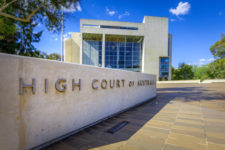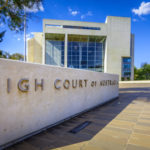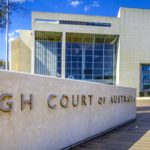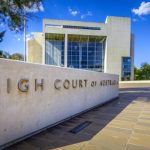High Court Rules on the Admissibility of Illegally Obtained Evidence

Animal protection organisation, Animals Australia, received an anonymous tip off in November 2014 regarding the illegal practice of live baiting greyhounds being used at a Londonderry property in Sydney’s western suburbs.
As a result, the organisation’s chief investigator, Lyn White, engaged the services of documentary photographer Sarah Lynch to set up an optical surveillance device focused on the training ring at the property. This led to the capture of seven recordings that revealed the practice was indeed occurring.
By doing so, Lynch contravened section 8 of the Surveillance Devices Act 2007 (NSW), which makes it a crime to install such equipment without the consent of the owner or occupier. White chose this unlawful line of investigation, as she was of the view it was unlikely that a warrant would be issued pursuant to an anonymous lead.
In February 2015, Ms White provided the footage to the RSPCA, which went onto execute a search warrant at the Londonderry property that turned up evidence of live baiting. Posing as a dog owner, Lynch twice spoke to the owner Zeki Kadir, who allegedly admitted to engaging in the practice.
Racing trainers Mr Kadir and Donna Grech were both subsequently charged with intentionally perpetrating acts of serious animal cruelty, contrary to subsection 530(1) of the Crimes Act 1900. The offence carries a maximum penalty of five years behind bars.
The breach outweighed the findings
On the first day of their trial in the NSW District Court, the defendants applied for the surveillance evidence, the search evidence and the evidence from Kadir’s admissions to be excluded under the provisions of the Evidence Act 1995 (NSW).
Section 138 of the Act provides that evidence obtained in contravention of the law should not be admitted, “unless the desirability of admitting the evidence outweighs the undesirability of admitting evidence that has been obtained in the way in which the evidence was obtained”.
Subsection 138(3) provides eight factors the court must take into contact when considering whether the evidence should be accepted in the public interest. And 138(3) factor (h) requires consideration of the difficulty in obtaining the evidence if the law was not broken in doing so.
On 28 June 2017, NSW District Court Judge Mark Buscombe ruled that all three categories of evidence be thrown out, because they resulted from an illegal act that uncovered evidence of “very high” value, but the gravity relating to how the law was broken was a more serious matter.
Overturning the decision
The Director of Public Prosecutions went on to challenge the judge’s evidentiary ruling in the NSW Court of Criminal Appeal (NSWCCA) based on grounds which included that the trial judge had made an error by not sufficiently taking into account the difficulty of obtaining the evidence without breaking the law.
The three justice panel of the NSWCCA partially upheld the ground, ruling that the difficulty in obtaining the surveillance evidence did indeed warrant the breaking of the law in relation to the first recording. Their Honours expressed the view that it was at that point that the authorities should have been notified.
The court also found that the trial judge made an error by applying his finding relating to the surveillance evidence directly to the search and admissions evidence. The NSWCCA justices found that the first video recording, along with the search evidence and the admissions, should have been admitted.
The final appeal
Mr Kadir and Ms Grech challenged the NSWCCA findings in the High Court of Australia on 15 October last year. They did so on grounds including that the appeals court had made an error by not considering “the entire chain of causation” when it ruled on the search evidence and the admissions.
The High Court panel of five justices ruled that the trial judge had been correct in finding all the video footage was inadmissible when the gravity of the way in which the law had been contravened in obtaining it had been factored in.
However, their Honours went on to point to the provision within section 138 of the Evidence Act which stipulates that when considering evidence, the “way” in which it was obtained must be scrutinised. And this applied to the search and admissions evidence in this case.
So, in relation to the search evidence there was a serious breach of the law which led to obtaining the search warrant, however the RSPCA acted lawfully within its regulatory functions, when it obtained the warrant that allowed for the gathering of evidence at the Londonderry property.
In relation to the admissions, the High Court found that the “causal link” between this and the surveillance evidence was “tenuous”. The court found that as a result, permitting this evidence didn’t encourage the breaches of law involved in obtaining the surveillance evidence.
“The weighting of the factors that are concerned with the impropriety or illegality to the balancing of the public interests may differ as between the surveillance evidence, the search warrant evidence and the admissions,” their Honours found.
Both court findings partly upheld
Mr Kadir’s lawyers also argued that, should the justices find an error in the decision of the NSWCCA, the matter should be remitted to the trial judge for reconsideration.
However, the High Court justices pointed out that under section 5F of the Court of Appeal Act 1912 (NSW), their court has the jurisdiction to vacate the ruling of the appeals court and may give “such judgement as ought to have been given in the first place”.
The High Court went on to find that while admitting the surveillance evidence could encourage further acts of “vigilantism”, this was not the case in regard to the search warrant evidence gathered lawfully by the RSPCA.
And in looking at Ms Lynch’s claims to be someone else when gathering the admissions evidence, the High Court ruled that in accepting this evidence – which was of high value – there were no concerns of encouraging vigilantism and the breaching the rules of evidence.
For these reasons, the High Court ruled on 5 February this year, that the NSW District Court was correct in finding the surveillance evidence was inadmissible, while the NSWCCA was correct in determining the search evidence and the admissions were admissible.
So, Mr Kadir and Ms Grech will now be returning to the NSW District Court to stand trial on the original animal cruelty charges laid against them.








